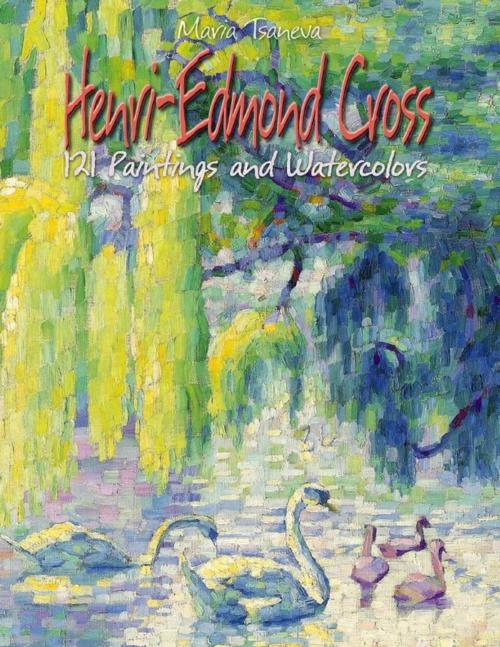| Author: | Maria Tsaneva | ISBN: | 9781312003347 |
| Publisher: | Lulu.com | Publication: | March 1, 2014 |
| Imprint: | Lulu.com | Language: | English |
| Author: | Maria Tsaneva |
| ISBN: | 9781312003347 |
| Publisher: | Lulu.com |
| Publication: | March 1, 2014 |
| Imprint: | Lulu.com |
| Language: | English |
Henri-Edmond Cross was a French painter and print maker, most applauded as a master of Neo-Impressionism who played an important role in shaping the second phase of that movement. His early paintings are typically Pointillist, with closely and regularly positioned tiny dots of color. Later, he gradually shifted his technique, instead using broad, blocky brushstrokes and leaving small areas of exposed naked canvas between the strokes. The resulting surfaces of the paintings resembled mosaics, and the works may be seen as precursors to Fauvism and Cubism. Cross stated that the Neo-Impressionists were "far more interested in creating harmonies of pure color, than in harmonizing the colors of a particular landscape." Henri Matisse and other artists were very influenced by the late-career Cross, and such works were instrumental in forming the principles of Fauvism. Among the other artists influenced by Cross were André Derain, Henri Manguin, Charles Camoin, Jean Puy and Louis Valtat.
Henri-Edmond Cross was a French painter and print maker, most applauded as a master of Neo-Impressionism who played an important role in shaping the second phase of that movement. His early paintings are typically Pointillist, with closely and regularly positioned tiny dots of color. Later, he gradually shifted his technique, instead using broad, blocky brushstrokes and leaving small areas of exposed naked canvas between the strokes. The resulting surfaces of the paintings resembled mosaics, and the works may be seen as precursors to Fauvism and Cubism. Cross stated that the Neo-Impressionists were "far more interested in creating harmonies of pure color, than in harmonizing the colors of a particular landscape." Henri Matisse and other artists were very influenced by the late-career Cross, and such works were instrumental in forming the principles of Fauvism. Among the other artists influenced by Cross were André Derain, Henri Manguin, Charles Camoin, Jean Puy and Louis Valtat.















